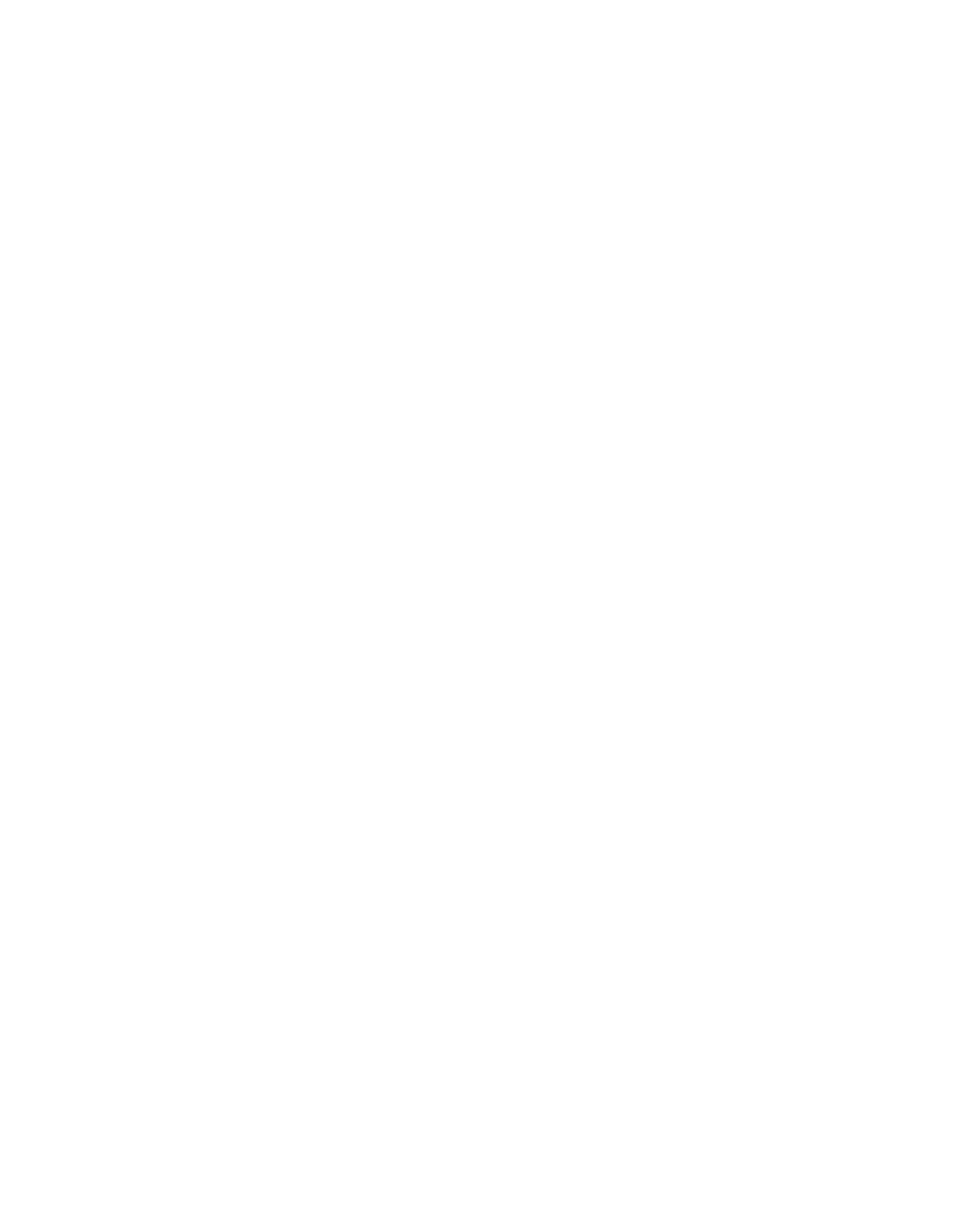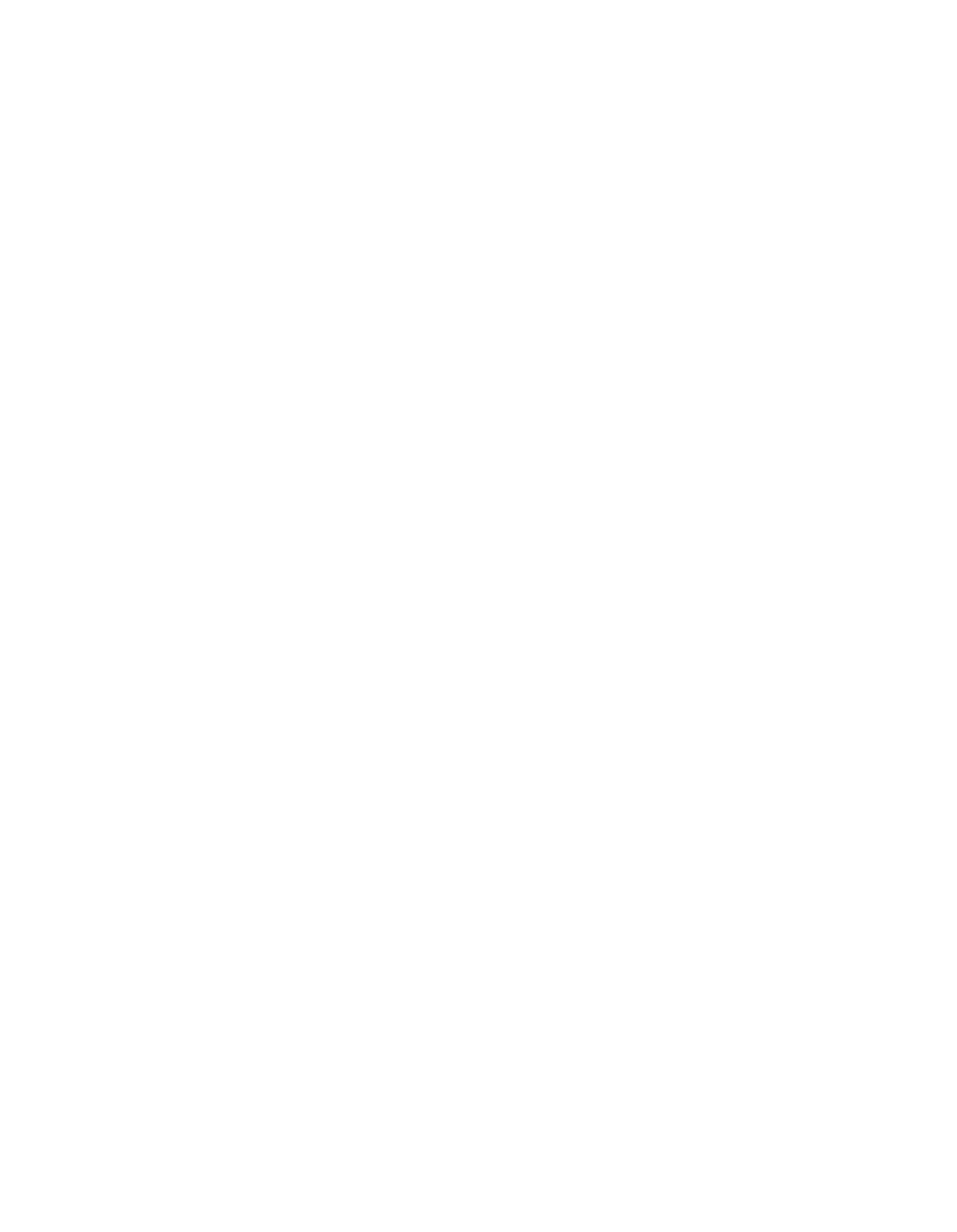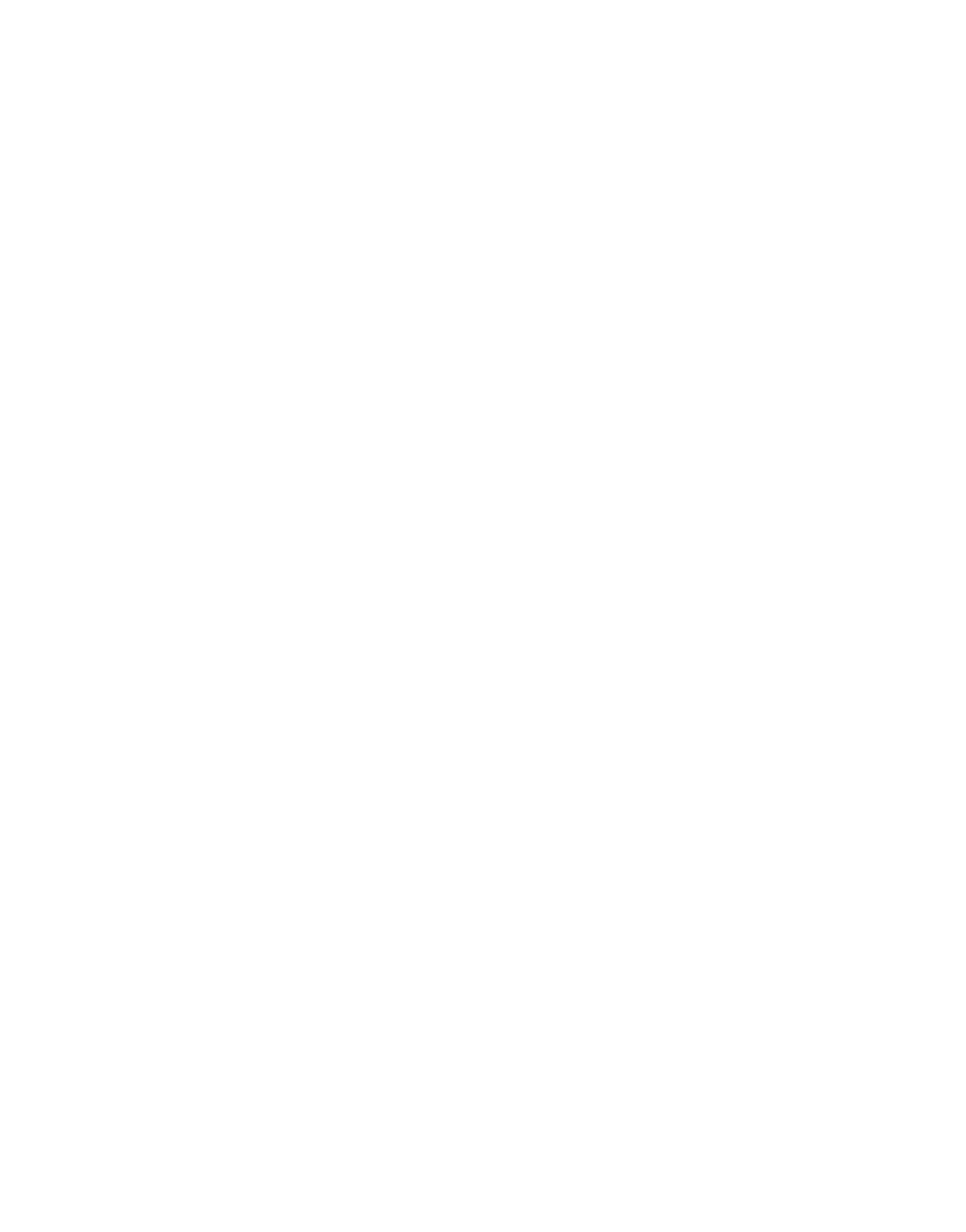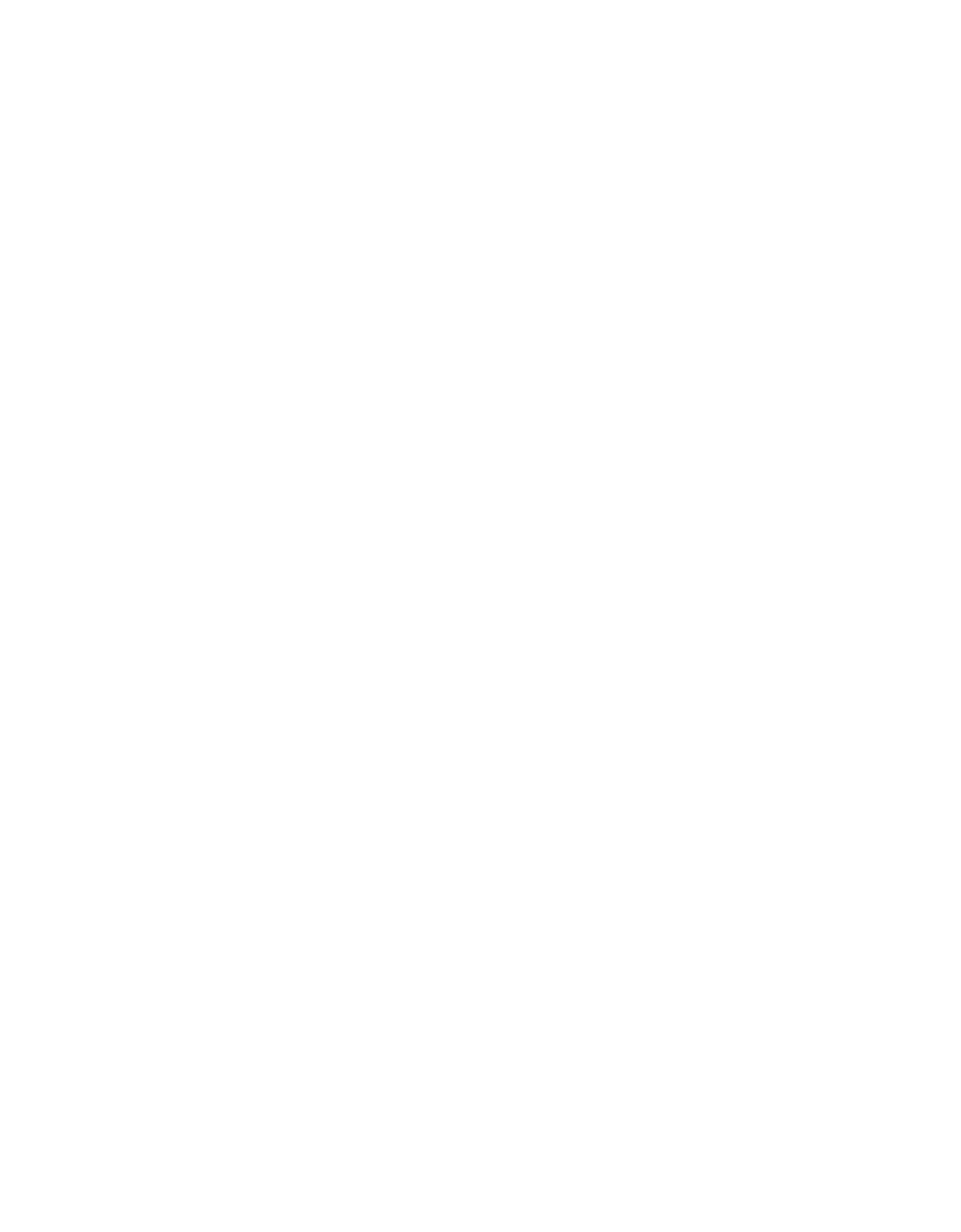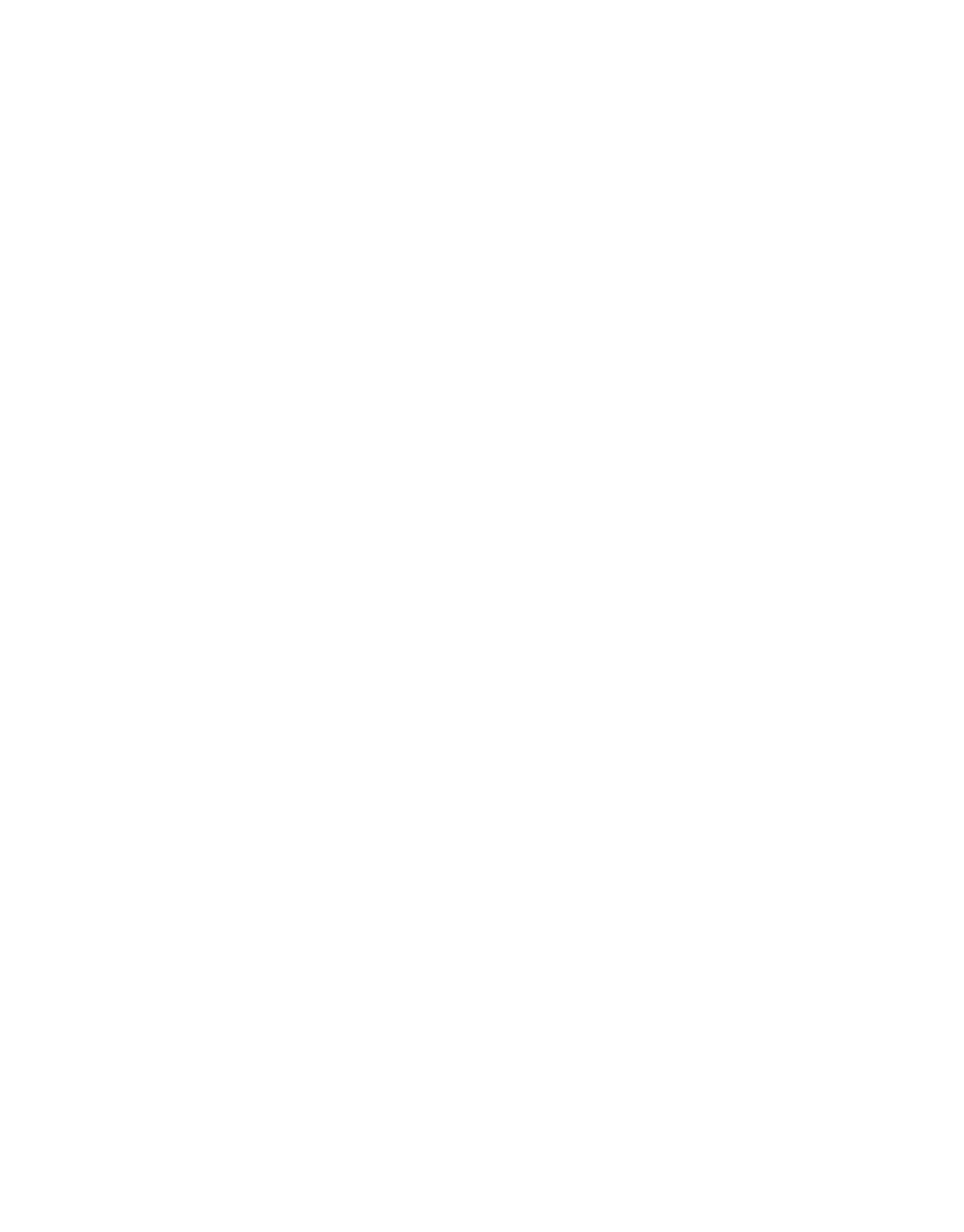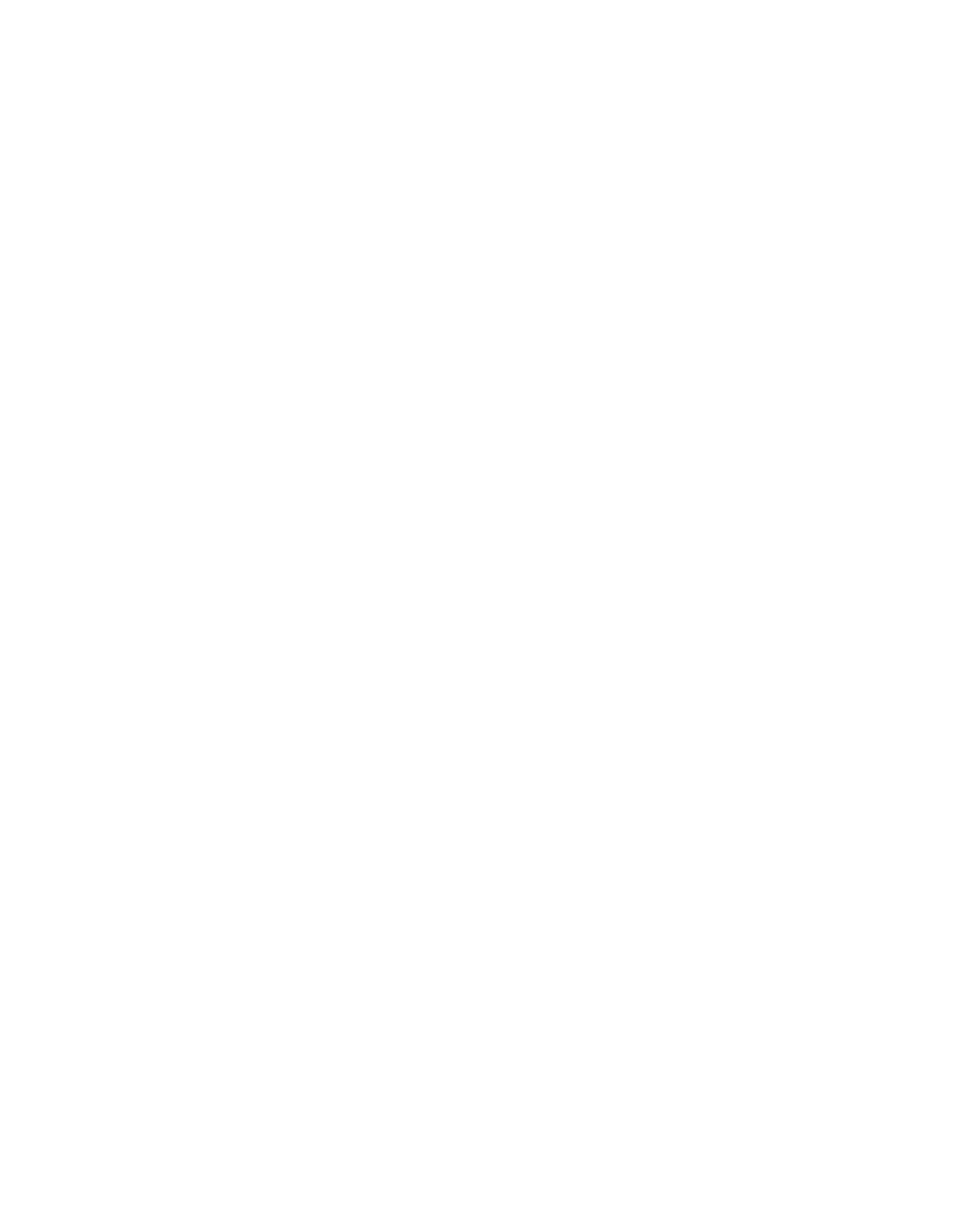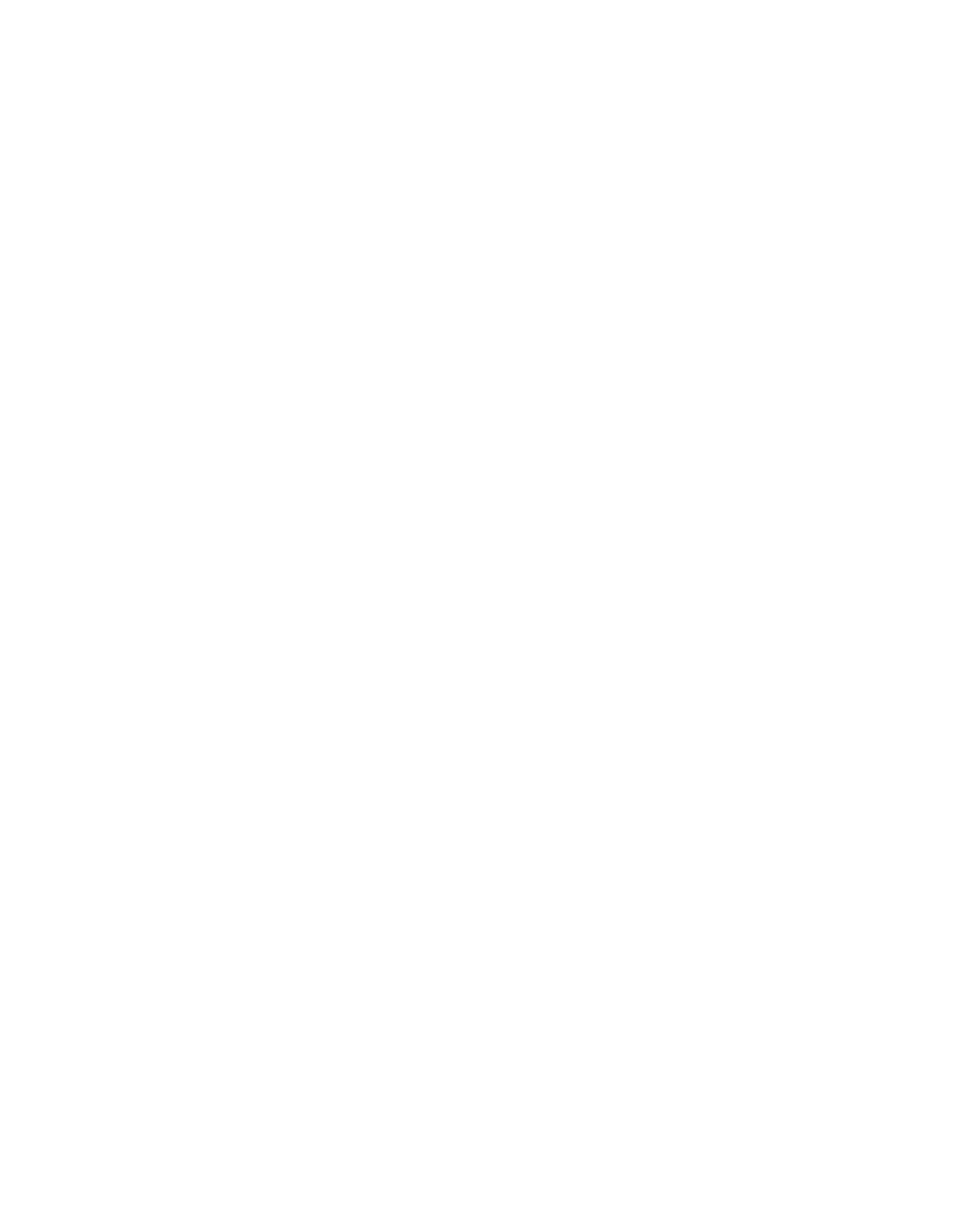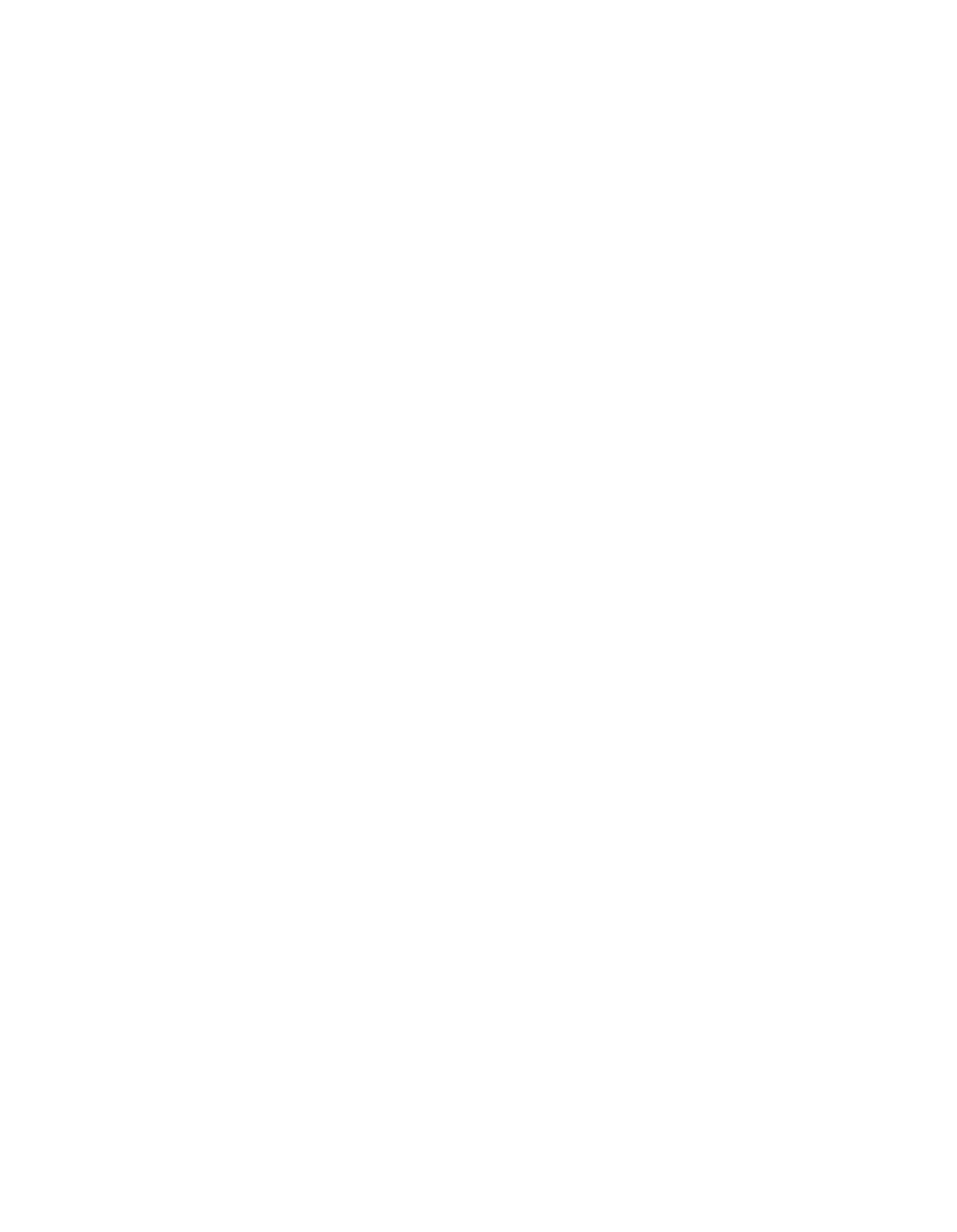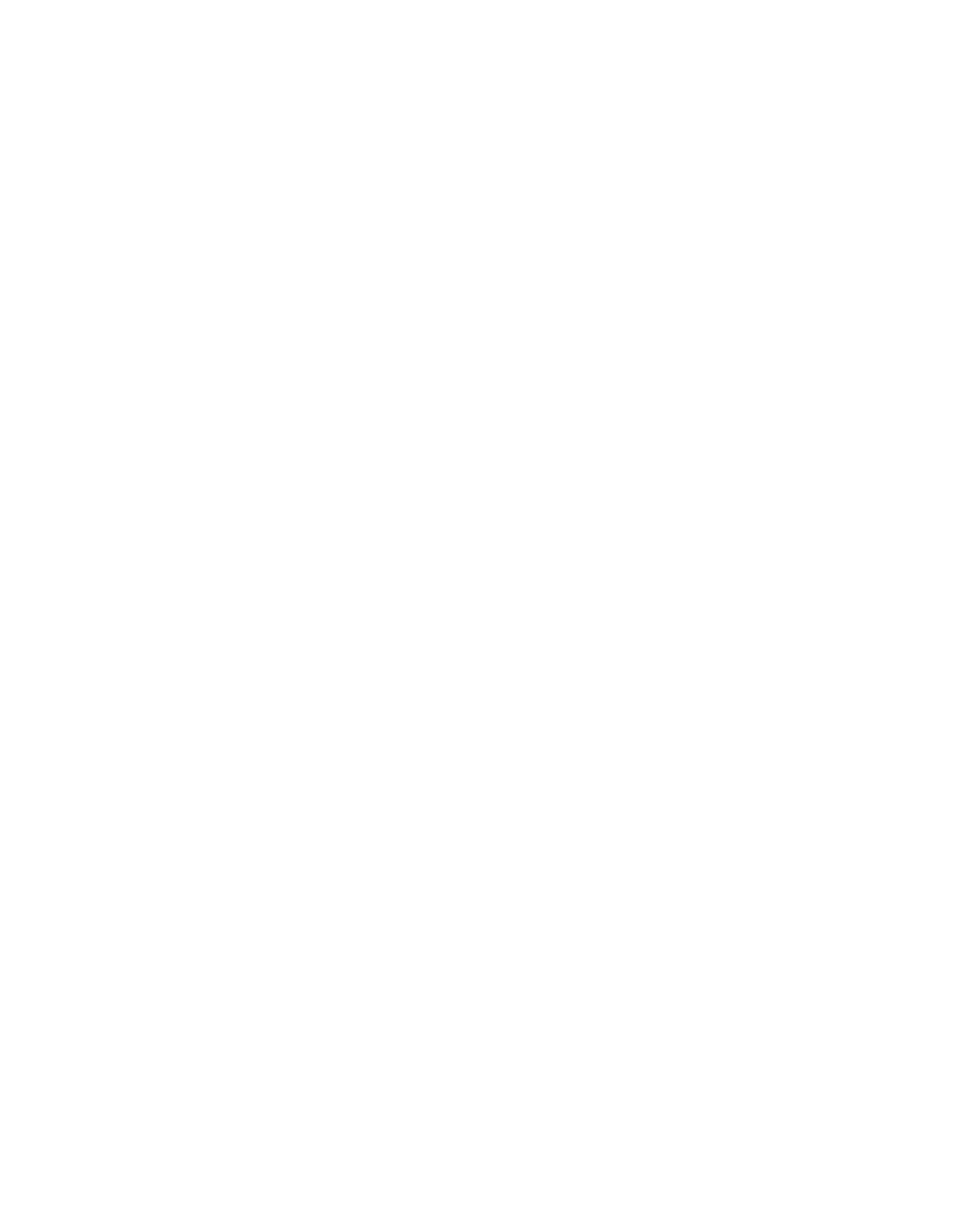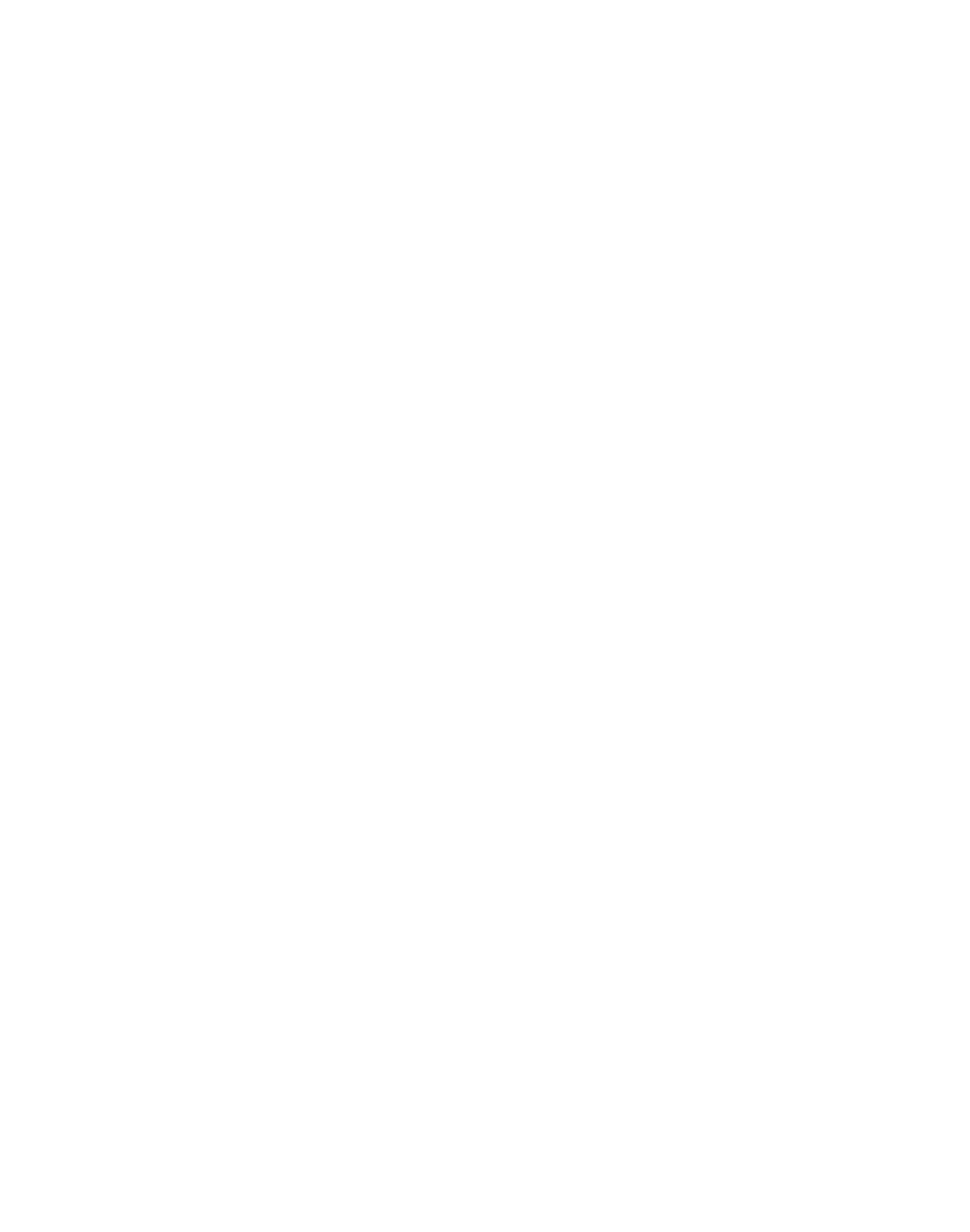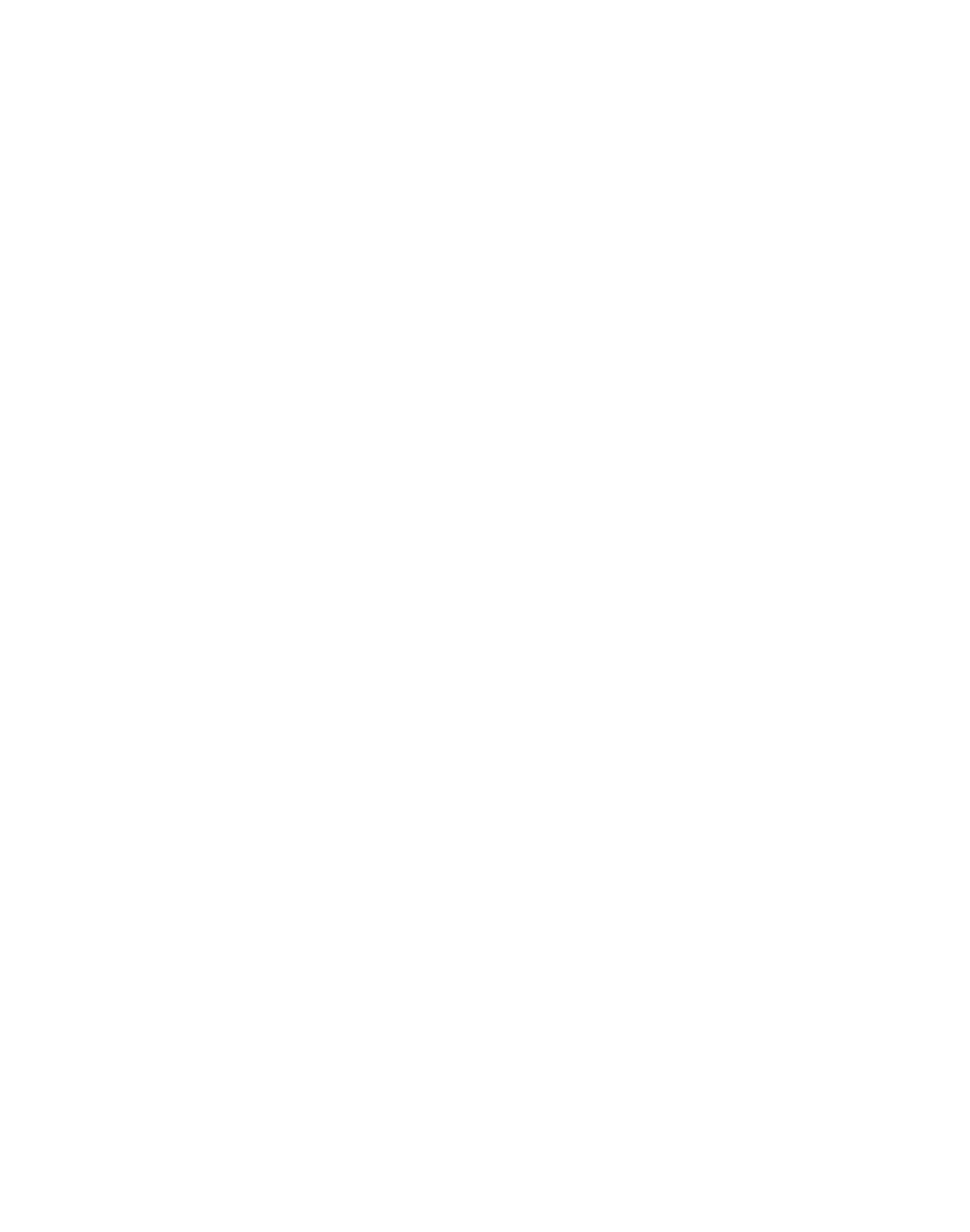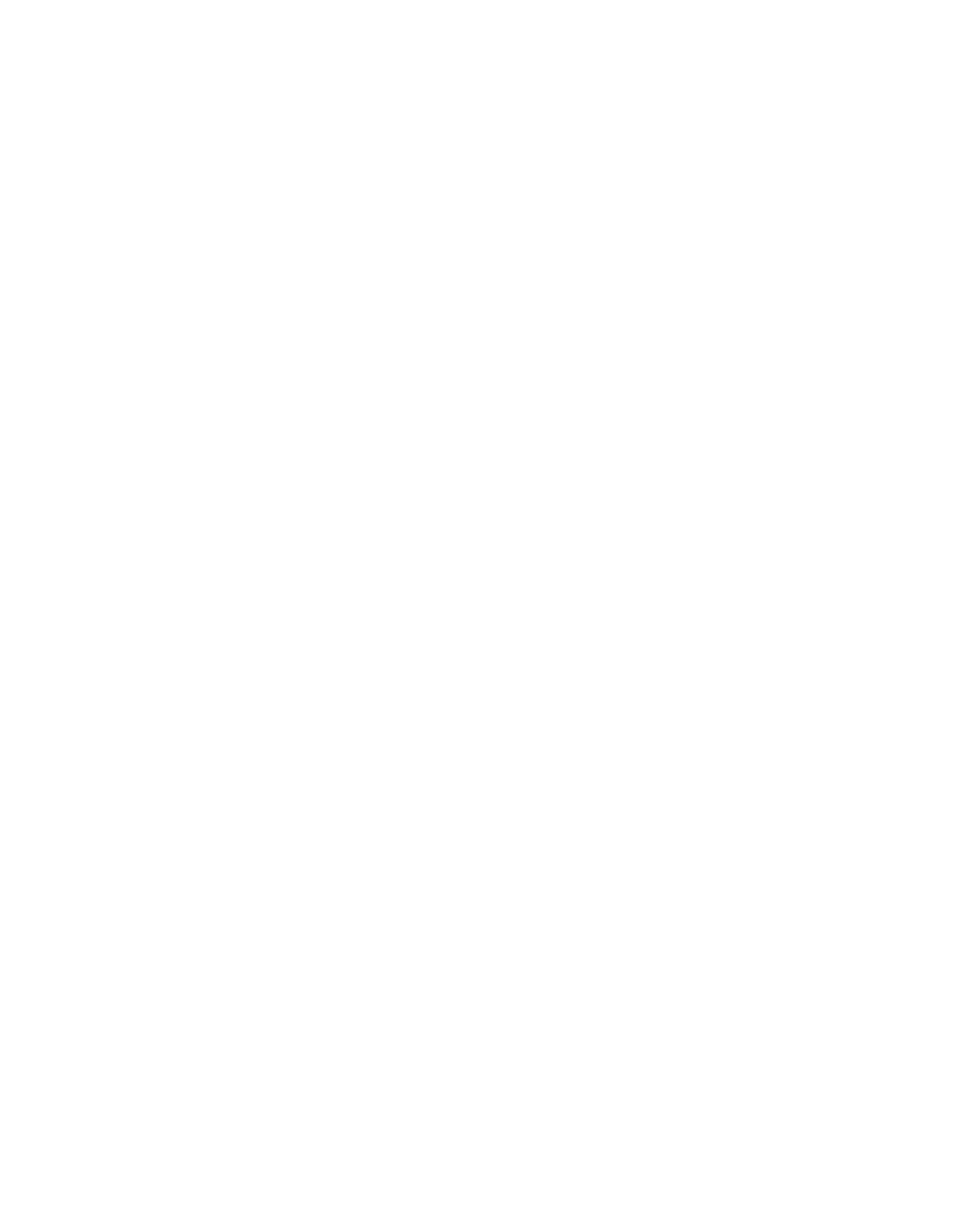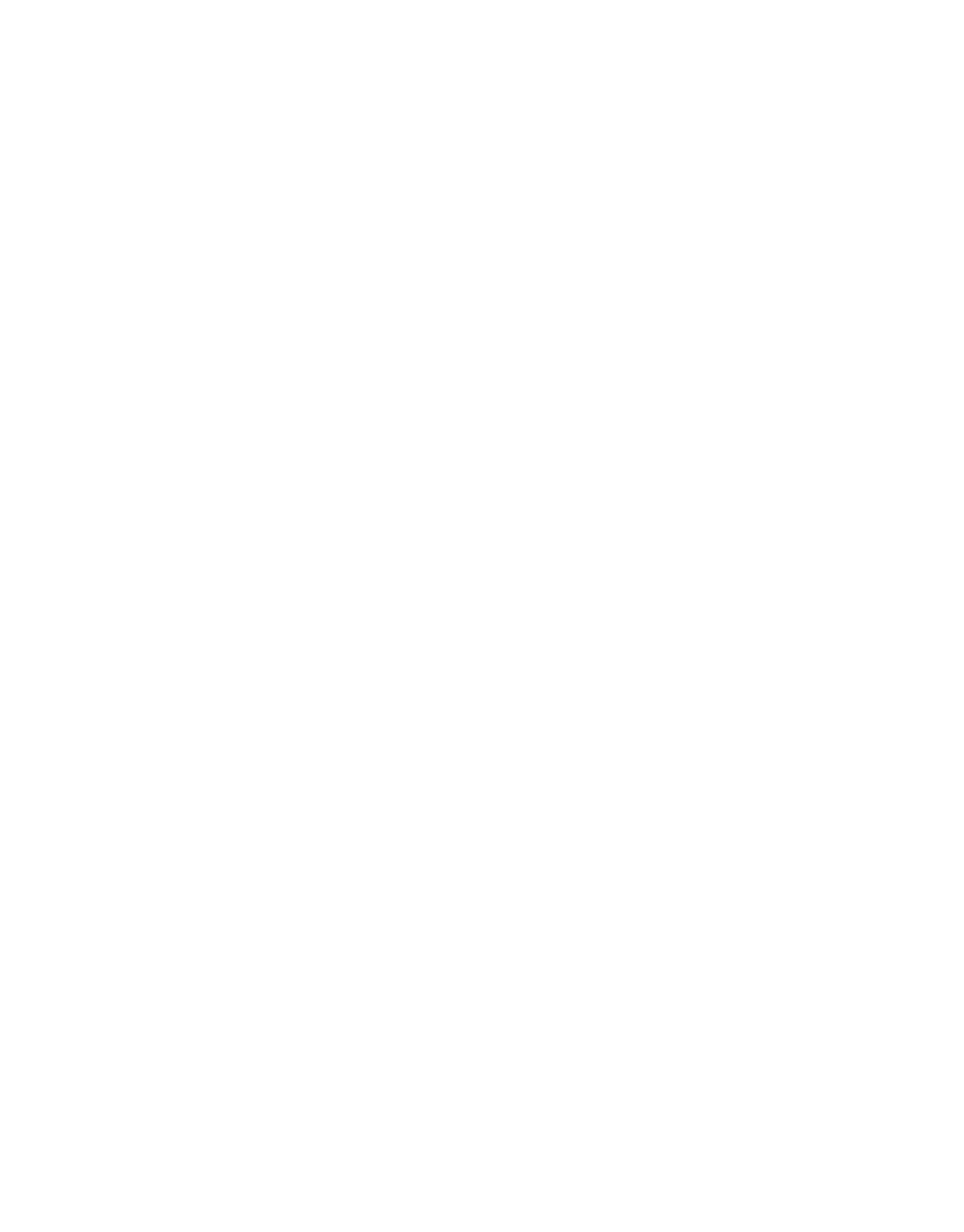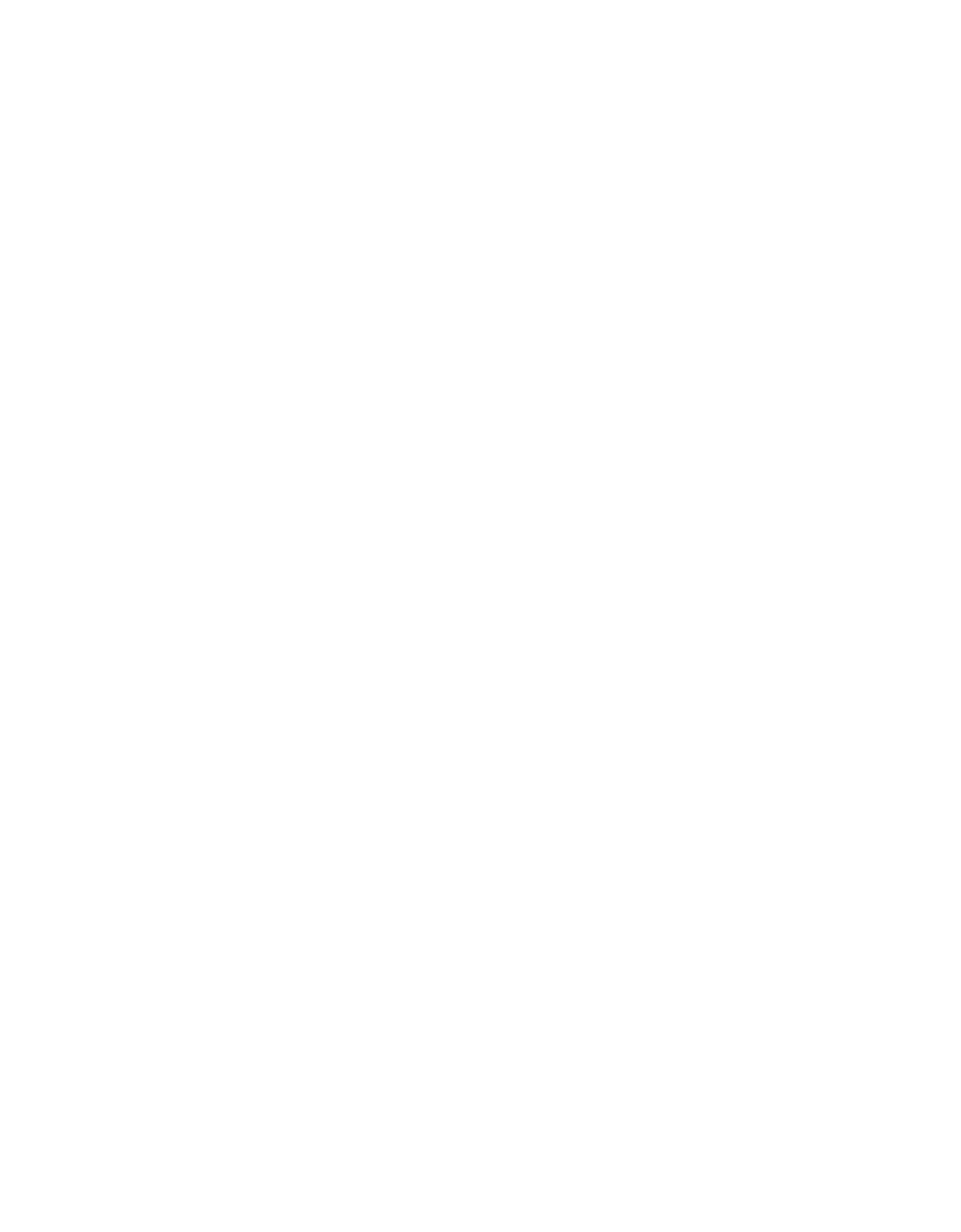ILLINOIS POLLUTION CONTROL BOARD
December
6,
1989
IN THE MATTER OF:
)
PROPOSED AMENDMENTS TO TITLE
)
R88-21, DOCKET B
35, SUBTITLE C (TOXICS CONTROL)
PROPOSED REGULATIONS
FIRST NOTICE
OPINION AND ORDER OF
THE
BOARD
(by R.
C.
Flemal)
The Board by separate Opinion and Order
of this date created
this Docket
in the overall R88—21 proceeding.
As
the Board there
notes,
the purpose of opening Docket B is
to provide for First
Notice of certain adjuncts
to the overall proposed amendments,
which themselves are today sent to Second Notice.
Most of the
elements assigned
to Docket B were not included
in. the First
Notice of what
is now Docket
A.
The Board notes
that
the amendments
in Docket B are today
proposed
as
amendments of the Board regulations as these
currently exist,
and not as
the regulations would be amended
under Docket A.
However,
the Board anticipates
that the
amendments
of Docket A will become effective prior
to Docket B
proceeding
to Second Notice.
Therefore,
at
the time of Second
Notice the Board can recast the Docket
B materials
as amendrents
to the regulations adopted
in Docket A.
DISCUSSION OF PROPOSED AMENDMENTS
Sections 302.208 and 302.304
Numeric Standards
for Total
Dissolved
Iron
At First Notice of Docket A’ the Board proposed to delete
the Total
Iron General Use Water Quality Standard found at
Section 302.208(e).
This proposal was based upon argument
that
the total
iron standard
is
relatively meaningless from all
environmental and health perspectives; among other matters, total
iron is overwhelmingly present
under ambient conditions
as
particulate iron which
is not a form available to aquatic life.
This perspective was affirmed during the post—First Notice
hearings
(R.
at 696—7,
740).
On this basis the Board continues
to propose
in Docket A the deletion of the total
iron water
quality standard.
‘In
the Matter of: Proposed Amendments
to Title 35, Subtitle
C
(Toxics Control), R88—21, August
31,
1989.
EO(-
2/~9
However,
the question remains open as to whether there
should be adopted an alternative to the total
iron standard.
The
Board today proposes for
First Notice standards
for dissolved
iron.
These dissolved iron standards are proposed
for both
General Use Waters at Section 302.208 and Public and Food
Processing Waters at Section 302.304.
Whereas there is no known documentation for the aquatic
toxicity of
total iron at ambient concentrations,
there
is
evidence that dissolved iron in concentrations of less than
1
mg/l
is toxic to at least certain aquatic organisms
(R.
at 698—
700,
759—60;
Exh.
87).
Additionally, there
is substantive
evidence that aquatic degradation accompanies even moderate
concentrations of dissolved iron
(R.
at
764).
Upon review of
these data,
the Board concurs with the Agency,
for the purpose of
First Notice,
that
a General Use dissolved iron standard is
necessary for the protection of Illinois waters.
The standard
the Board
today adopts
for
First Notice
is 0.2 mg/l,
which the
Board believes comports with the best available data on iron
toxicity and ecological
damage.
Sir~ilarly,the Board today proposes
for First Notice ~
Public and Food Processing Water Supply Standard for dissolved
iron of 0.3
mg/i.
This amendment
is occasioned because the
deletion of total
iron from the General Use Standards
is also an
effective deletion of total
iron from the Public and Food
Processing Water
Standards, pursuant to the cumulative
relationship of the Public and Food Processing Water Standards
with the General Use Standards
found at Section 302.301.
The 0.3
mg/i standard is that recommended by the USEPA in the “Red Book”
as the limit beyond which conventional surface water systems are
unable
to consistently reduce higher levels of dissolved
iron.
to
aesthetically acceptable levels
(R.
at 740—1).
In this sense,
it
is not
a health—limited standard.
A unique,
but not necessarily troublesome, aspect of today’s
proposal for dissolved iron is that the proposed General Use
Standard
is more stringent that the Public and Food Processing
Water Standard.
This
is the converse of
the relationship for all
other parameters which have different
limits
in the
two
sets of
standards.
Section 302.211(k)
Mixing
Zones
for Thermal Discharges
IERG recommends
the addition of a subsection
(k)
to Section
302.211, General Use Temperature Standards
(R.
at 741—3).
While
the Board
is not yet convinced of either
the need for nor the
desirable effect
of the proposal,
the Board does believe that
further
exploration of
the issue
is justified.
Accordingly,
as
a
method of continuing exploration,
the Board today adopts
the
proposal
for purposes of First Notice.
—3—
As
justification for
its proposal,
IERG in part opines that
“olne
of
the problems with the First Notice
of
Docket
A
is
that
it appears
to remove all mixing
zones from the time of
adoption of the regulations until such time as they are applied
for and granted by the Agency”
(R.
at 742).
With this as the
beginning premise,
IERG thereby apparently concludes that a
massive and “expensively duplicative” effort would be necessary
on the part of
the regulated community to restablish
their mixing
zones
(Id.).
Without here addressing
the matter
of whether such
implied mixing zones do
if fact exist,
the Board does note that
the beginning premise
is itself
incorrect.
Nothing
in the rule
proposed here or
at First Notice
is or was intended to
disestablish any mixing
zone.
Moreover,
nothing
in the
rule
proposed here or
at First Notice
is
or was intended to eliminate
the right
to allowed mixing,
as long as the allowed mixing
is
within
the bounds
of
proper environmental management.
The Board
is aware
that the First Notice Opinion did not
fully exprund on
the concept
of allowed mixing.
The Board hopes that today’s
greater exposition
(see preceding) will serve -to better clarify
this and related issues.
IERG’s second concern
is whether the limitations proposed at
Section 302.102(b)
should
be the criteria upon which
a mixing
zone for
thermal discharges
is based.
As
IERG points out,
“t)he
impact
of heat
...
may be quite different than that of toxic
chemicals and may,
in some instances,
even be beneficial”
(P.
at
742).
While
the Board does not believe that the Section
302.102(b)
limitations are necessarily tailored entirely
to
limiting the impact
of toxic chemicals,
the Board can nonetheless
appreciate
the unique nature of thermal discharges
in this
context.
The Board does not necessarily see,
however,
how
IERG’s
proposed language would address the potential inapplicability
of
any provision of Section 302.102(b)
to thermal discharges.
Interested persons are particularly requested to instruct
the
Board on this matter.
Lastly,
the Board questions whether
the proposed language
is
unnecessarily redundant
of Section 302.102(b)(l2) as proposed
in
Docket A.
The Agency,
for example, contends
that the proposed
language
is “unnecessary in that it repeats allowances provided
in Section 302.201”
(PC #25 at
19).
Interested persons are
requested to
comment
on this matter.
Section 303.354
Horseshoe Lake Mixing Zone and ZID
At First Notice
the Board proposed what
is
in effect
a
proposed site—specific mixing
zone rule applicable
to discharge
from Granite City Division. of National
Steel Corporation
(“GCD”)
to Horseshoe Lake.
Today
the
Board enters this proposal,
in
a
slightly modified form,
into Docket
B,
and thereby sends
it
to
Second First Notice.
Although
it
is not technically necessary
to
repropose this amendment
for
First Notice,
the Board believes
that
it
is desirable to do so in the context of
the purposes
imposed on Dockets A and B.
The GCD proposal
is clearly not part
of the federally-mandated portion of the instant rulemaking,
and
hence
fails that test
for
inclusion
in Docket
A.
Additionally,
as the Board
noted at First Notice,
there is question as to
whether GCD’s concerns are
in fact best addressed via
a site—
specific
rule.
The Board does not believe that this issue
has
yet been fully addressed,
and accordinglç’ believes that
the more
liberal timeframe of Docket
B is better suited for the resolution
of the matter.
A second matter which the Board believes needs
to be
addressed
is the need to specify
a full 26—acre mixing zone for
GCD given that its near—field mixing
region
is apparently
of
lesser size
(P.
at
1270,
1292).
Similarly,
the need to specify
a
1000 square—foot
ZID needs
to be reconsidered
in
licht
of the
Board’s deletion
in Docket A of
the 1000 square—foot limitation
on ZIDs.
Among changes made ~is a change
in proposed placement from
Section 303,362
to Section 303.354.
This change
is made solely
to accommodate the organizational scheme for Part
303 specified
at
35
Ill. Adm.
Code 303.301,
and does not alter
the content or
intent of
the proposed amendment.
The Board notes
that this
errata was identified
in the Board’s Supplemental Opinion of
September
28, 1989.
Section 304.211
Intermittent Chlorination Exception
Both IERO and Agency
recommend that
a necessary adjunct
to
the adoption in Docket A of
a General Use Water Quality Standard
for total
residual chlorine
(“TRC”)
is an exception for
discharges which
result from intermittent chlorination
practice.
Intermittent chlorination is practiced by utilities
and
industries which use surface waters as cooling water.
To
prevent
biofouling
in various cooling devices,
the standard
practice
is
to provide short duration chlorination of
the cooling
waters using chlorine or related substances measureable as TRC.
The methods
by which antifouling chlorination may be
conducted are spelled out
in federal regulations at
40 CFR 423
(1988)
(Exh.
88).
Among
these are that TRC may be discharged
from a unit
for
two hours
a day and more than one unit may not
discharge TRC at
the same time.
Additionally,
the TRC
discharged may not at any time exceed 20 ug/l
(in contrast
to the
19 ug/1 proposed as the acute standard in Section 302.208(d),
Docket
A).
The Agency
is convinced that cooling water discharges which
conform
to the restrictions of
40 CFP
423
will
not
cause toxicity
to aquatic life
(P.
at
707).
As
IERG also points out,
the
1fl(’~ 252
—5—
USEPA’s “Ambient Water Quality Criteria for Chlorine”
(Exh.
6)
emphasizes that the TRC acute and chronic standards “are intended
to apply to situations of continuous exposure whether the
concentrations are fluctuating or constant,
but
not
to situations
of specially controlled
intermittent exposures where more
appropriate data
is available”
(R.
at 729).
IERG has presented information on the economic feasibility
of the electrical utility industry complying with the Docket A
TRC standard absent
the proposed exception
(R.
at 731—4).
IERG
contends
that this could not be accomplished absent special
control equipment, and that studies have shown that the cost per
unit of
installing dechlorination equipment would average
$200,000, and the cost of annual operations would be $50,000,
both
in
1984
dollars
(P.
at
732).
For the electrical generating
industries
in the State
the total cost would be
in the millions
of dollars
(P.
at 733)~ Conversely,
IERG believes
that most
facilities could comply under the proposed exception without
additions of new capital equipment, although some changes
in
operating practices might be necessary
(P.
at 750—1).
IERG and
the Agency offer
the Board alternatives as
to how
the intermittent chlorination exception might
be incorporated
into
Board
regulations.
IERG
suggests
the
incorporation
of
a
standard
for
intermittent
TRC
within
Section
302.208
(P.
at
735—
8;
Exh.
85,
Attachment
B).
In
the
alternative,
IERG
suggests
(R.
at
735) acceptance of the Agency’s recommendation that the
exception
language
be
placed
within
the
effluent
regulations
of
Part 304.
The Board today proposes the second of these
alternatives.
The Board believes that an exception for
particular
effluent conditions
is best placed within Part 304.
Moreover,
the Board believes that the Agency’s observation
that
“ijt
would be very difficult,
if not impossible,
to assess
compliance to an intermittent water quality standard”
(P.
at
708),
is indeed telling.
A standard for which compliance cannot
be assessed
is
a standard without weight.
The language of
today’s proposal
is based upon that offered
by the Agency
in PC #25
(p.
19),
which in turn is based on
comments at hearing
by
IERG
(P.
at 1232—42, 1468—71).
The Board,
however, has altered the second sentence of the Agency’s proposal
to more clearly specify the meaning of “intermittent” as applied
within
Section
304.211.
As an additional matter,
the Board recognizes that there has
been
discussion
as
to
whether
the
proposed
language
is
better
placed
within
Subpart
A
of
Part
304,
rather
than
within
Subpart
B
of Part 304,
as recommended by
the Agency
(P.
at
1234—5,
1237—
8).
The Board
does not view this placement issue
as
substantive.
For
the purposes of First Notice
the placement is
in accordance with the Agency’s
recommendation.
106• 253
Section 305.102
RePorting Requirements
Upon the recommendation of
IERG
(P.
at
83—4,
1150—2;
Exh.
56
at 15—16;
Exh.
109 at 12—13)
the Board adopts
for. First Notice
amendments
to Section 305.102
intended to clarify
(1)
the role of
a schedule of compliance as such interplays with the amendments
proposed
in Docket
A,
and
(2)
the status of
a permittee
regarding
legal action by
a third party.
These amendments were originally
proposed by
IEP.G prior to First Notice o~the unsplit docket.
However,
they were not included in the Board’s First Notice of
the unsplit docket.
Accordingly,
the Board
today achieves their
First Notice by the vehicle of Docket
B.
By way of justification,
IERG notes:
It
is IERG’s understanding of the Agency’s testimony
that
in
many
cases they will use information.
gathered pursuant to the Docket A amendments)
to
arrive at
an. ultimate permit limitation.
As the
Agency has explained
it may be
an extended period
from the time information isprovided
until
a
limitation becomes an enforceable permit condition.
The question can
be legitimately asked: What
is the
status of the permittee as regards legal action by
a
third party?
Existing
rule 309.148 appears to provide some
protection. and IERG believes that
a formal linkage
is
needed between
the
two rules.
Rule 309.148(a)
states:
a)
With respect
to any discharge which is
not
in compliance with applicable effluent
standards and limitations, applicable water
quality standards or other
legally
applicable requirements,
the permittee shall
be required to take specific steps
to
achieve compliance therewith
in the shortest
reasonable period of time consistent with
the guidelines and requirements of the CWA
and the Act.
One could certainly argue
that proposed rule 302.210
is
a “legally applicable requirement”.
Accordingly,
it
should
be
amenable
to
coverage
under
a
schedule
of
compliance.
IERG believes that this would occur
in
practice.
It
is important that the Board recognize
in. this new rule
(305.102)
that a compliance schedule
is
the
proper
mechanism
to
allow
a
discharger
to
operate
within
the
law until
such
time as
a
determination
is
made
that
toxicity
exists
and
a
numerical permit limitation can be incorporated.
If
1~1(~-254
_-1_
a schedule
is
in effect, the discharger
is in effect
complying with Rule 302.210
by an alternate means.
The purpose
of our proposed subsection
(d)
is
to
clarify and reinforce the link between rules~302.201
and 309.148.
The purpose
of our proposed
subsection
(e))
is
to
make clear
that adherence to a legally enforceable
schedule of compliance
is in fact an alternate
compliance mechanism and thus precludes enforcement
by any party for
a violation of 302.210.
Exh.
109 at 12—13
Some minor punctuation and wording changes have been made
in
IERG’s proposed lancuage.
The Board does not
intend these
to be
substantive changes.
Section 309.152
Toxic
Pollutants
The Board today
reproposes amendment to Section 309.152(b)
because
it sees
an. apparent dilemma
in the amendment as proposed
for First
Notice.
That dilemma
is
that there appears
to be a
clear precedent that possession
of
a permit cannot be a bar
to
enforcement
of Board regulations
(e.g., Landfill,
Inc.
v.
Pollution Control Board
et
al.,
387 N.E.
2d 258 (1978),
Illinois
Supreme Court).
As proposed at First Notice,
Section 309.152
appears
to establish such bar.
In particular,
it would seem to
insulate against enforcement
of violation of the general
prohibition against causing or contributing to water quality
violations
(35
Ill. Adm. Code 304.105).
In. any event,
the Board
believes
that
it
is inappropriate to limit
the enforceability of
its regulations
to the pace of Agency permitting activity.
The Board understands the spirit
in which
the First Notice
Section 309.152(b)
was offered and apparently stipulated by both
the Agency and regulated community.
That spirit is
that the
regulated community should
not be subject
to surprise as
criteria,
in particular, undergo possible evolution.
The Board
shares
this spirit, but does not at present see that First Notice
Section 309.152(b)
is a permissible method of expressing
it.
Accordingly,
the Board
today proposes
a possible alternative
method of addressing
the problem.
The Board particularly invites
comment both on the general dilemma and on the method herein
proposed to address
it.
Today’s proposal
is
intended to give
a permittee who timely
files
for
a permit modification a stay of enforcement
of the
Board’s rules for up to
240 days.
The 240 days are
intended to
allow for
30 days for filing an application
for modification, 90
days while
the permit modification
is before
the Agency, and an
1~)6--255
—8—
additional
120 days should the permittee need or desire to seek
a
variance before the Board.
During this stay period the permittee
would therefore presumably
be able to address compliance without
threat of surprise enforcement.
ORDER
The Board hereby proposes for First Notice the following
amendments to
35 111. Adm. Code,
Subtitle
C:
Water Pollution,
Chapter
I, Pollution Control
Board,
Parts
302,
304,
and
309.
The
Clerk of
the Board is directed to file these proposed amendments
with the Secretary of State.
TITLE
35:
ENVIRONMENTAL PROTECTION
SUBTITLE
C:
WATER POLLUTION
CHAPTER
I:
POLLUTION CONTROL BOARD
PART 302
WATER QUALITY STANDARDS
SUBPART A:
GENERAL WATER QUALITY PROVISIONS
Section
302.101
Scope and Applicability
302.102
Mixing Zones
302.103
Stream Flows
302.104
Main River Temperatures
302.105
Nondegradation
SUBPART B:
GENERAL USE WATER QUALITY STANDARDS
Section
302.201
Scope and Applicability
302.202
Purpose
302.203
Unnatural Sludge
302.204
pH
302.205
Phosphorus
302.206
Dissolved Oxygen
302.207
Radioactivity
302.208
Chemical Constituents
302.209
Fecal Coliform
302.210
Substances Toxic to Aquatic Life
302.211
Temperature
302.212
Ammonia Nitrogen and Un—ionized Ammonia
SUBPART
C:
PUBLIC AND FOOD PROCESSING WATER SUPPLY STANDARDS
Section
302.301
Scope and Applicability
302.302
Algicide Permits
302.303
Finished ~caterStandards
11)6
256
—9—
302.304
Chemical Constituents
302.305
Other Contaminants
302.306
Fecal Coliform
SUBPART D:
SECONDARY CONTACT AND INDIGENOUS AQUATIC LIFE
STANDARDS
Scope and Applicability
Pu rpose
Unnatural Sludge
pH
Dissolved Oxygen
Fecal Coliform (Repealed)
Chemical Constituents
Temperature
Cyanide
Substances Toxic to Aquatic Life
SUBPART
E:
LAKE MICHIGAN WATER QUALITY STANDARDS
pH
Chemical Constituents
Fecal Coliform
Temperature
Existing Sources on January
1, 1971
Sources under Construction But Not
in Operation
on. January
1,
1971
302.509
Other Sources
AUTHORITY:
Implementing Section 13 and
authorized
by Section
27
of the Environmental Protection Act
(Ill.
Rev.
Stat.
1987,
ch.
111 1/2, pars.
1013 and 1027).
SOURCE:
Filed with the Secretary of State January
1,
1978;
amended at
2
Ill. Peg.
44,
p.
151,
effective November
2,
1978;
amended at
3
Ill.
Peg.
20,
p.
95, effective May 17, 1979;
amended
at
3
Ill. Peg.
25,
p.
190, effective June
21,
1979;
codified at
6
Ill.
Peg.
7818, effective June
22,
1982;
amended at
6 Ill. Peg.
11161, effective September
7,
1982;
amended at
6 Ill.
Peg.
13750,
effective October
26,
1982;
amended at
8
Ill.
Peg.
1629,
effective January
18,
1984;
peremptory amendments at
10
Ill.
Peg.
461,
effective December
23,
1985;
amended
in P87—27
at
12 Ill.
Peg.
9911,
effective May
27,
1988;
amended
in P85—29
at
12
111.
Peg.
12082, effective July
11,
1988;
amended in P88—i
at
13
Ill.
Peg.
5998,
effective April
18,
1989;
amended
in P88—21(B)
Section
302.401
302.402
302.403
302.404
302.405
302.406
302.407
302.408
302.409
302.410
Sect ion
302.501
302.502
302.503
302.504
302.505
302.506
302.507
302.508
Scope and Applicability
Dissolved Oxygen
APPENDIX A
APPENDIX B
References to Previous Rules
Sources of Codified Sections
—10-
4-
aL
Ill.
Peg.
___________
effective
SUBPART B:
GENERAL USE WATER QUALITY STANDARDS
Section 302.208
Chemical Constituents
The following levels of chemical constituents shall not be
exceeded:
CONSTITUENT
STORET
NUMBER
CONCENTRATION
(mg/i)
Arsenic
(total)
Barium (total)
Boron
(total)
Cadmium
(total)
Chloride
Chromium
(total hexavalent)
Chromium (total trivalent)
Copper
(total)
Cyanide
Fluoride
Iron
~
dissolved)
Lead
(total)
Manganese
(total)
Mercury
(total)
Nickel
(total)
Phenols
32730
Selenium (total)
Silver
(total)
Sulfate
Total Dissolved Solids
Zinc
01092
1.0
5.0
1.0
0.05
500.
0.05
1.0
0.02
0.025
1.4
~-8 0.2
0.1
1.0
0.0005
1.0
0.1
1.0
0.005
500.
1000.
1.0
(Source:
Amended at
effective
Ill.
Peg.
_____
SUBPART
C: PUBLIC AND FOOD PROCESSING
WATER SUPPLY STANDARDS
Section 302.304
Chemical Constituents
The following levels of chemical constituents
shall
not
be
exceeded:
STOPET
CONCENTRATION
CONSTITUENT
NUMBER
(mg/I
)
Arsenic
(total)
Barium (total)
Cadmium
(total)
01002
01007
01022
01027
00940
01032
01033
01042
00720
00951
~~845
01046
01051
01055
71900
01067
01147
01077
00945
70300
01002
01007
01027
0.05
1.0
0.010
106 253
—11—
Chloride
Chromium
Iron (dissolved)
Lead (total)
Manganese
(total)
Nitrate—Nitrogen
Oil (hexane—solubles
or equivalent)
Organics
Pesticides
Chlorinated Hydro-
carbon Insecticides
Aldrin
Chlordane
DDT
Dieidrin
Endrmn.
Heptachlor
Heptachior Epoxide
Lindane
Methoxychlor
Toxaphene
Organophosphate
Insecticides
Parathion
Chiorophenoxy Herbicides
2, 4-Dichlorophenoxy-
acetic acid (2,4—D)
2—( 2,4,
5—Trichioro—
phenoxy)—propionic
acid (2,4,5—TP
or Silvex)
Phenols
Selenium (total)
Sulphates
Total Dissolved Solids
00940
01034
01046
01051
01055
00620
00550, 00556
or 005~0
39330
39350
39370
39380
39390
39410
39420
39782
39480
39400
39540
39730
39760
32730
01147
00945
70300
250.
0.05
0.3
0.05
0.15
10.
0.1
0.001
0.003
0.05
0.001
0.
0002
0.0001
0.0001
0.004
0.1
0.005
0.1
0.1
0.01
0.001
0.01
250.
500.
(Source:
Amended at
effective
Ill.
Peg.
_____
Section 302.211
Temperature
a)
Temperature has STORET number
(F0) 00011 and
(C0)
00010.
b)
There
shall
be
no abnormal temperature changes that may
adversely affect aquatic
life unless caused by natural
conditions.
C)
The normal daily and seasonal temperature fluctuations
which existed before the addition of heat due
to other
than natural causes shall be maintained.
lnA-250
—12--
d)
The maximum temperature
rise above natural temperatures
shall
not exceed 2.8°C (5°F).
e)
In addition,
the water temperature at representative
locations
in the main river
shall
not exceed the maximum
limits in the following
table during more than one
percent
of the hours
in the 12—month period ending with
any month.
Moreover,
at
no time shall
the water
temperature at such locations exceed the maximum limits
in the following table
by more than 1.7°C (30F).
JAN.
16
60
JUL.
32
90
FEB.
16
60
AUG.
32
90
MAP.
16
60
SEPT.
32
90
APP.
32
90
OCT.
32
90
MAY
32
90
NOV.
32
90
JUNE
32
90
DEC.
16
60
f)
The owner
or operator of
a source of heated effluent
which discharges
150 megawatts
(0.5 billion British
thermal units per hour)
or more shall demonstrate in
a
hearing before
this Pollution Control Board
(Board)
not
less than
5 nor more
than
6 years after
the effective
date of
these regulations
or,
in the case of
new
sources, after
the commencement
of operation,
that
discharges
from that source have not caused and cannot
be reasonably expected to cause significant ecological
damage
to the receiving waters.
If
such proof
is not
made to the satisfaction
of the Board appropriate
corrective measures shall
be ordered
to be taken within
a
reasonable
time as determined by the Board.
g)
Permits
for heated effluent discharges,
whether
issued
by the Board or
the Illinois Environmental Protection
Agency (Agency),
shall be subject
to revision
in the
event
that reasonable future development creates
a need
for reallocation of
the assimilative capacity
of the
receiving stream as defined
in the regulation above.
h)
The owner
or operator of
a source of heated effluent
shall maintain such records and conduct such studies of
the effluents from such sources and of their
effects as
may be required by the Agency or
in any permit granted
under
the Illinois Environmental Protection Act
(Act).
i)
Appropriate corrective measures will be required
if,
upon complaint filed
in accordance with Board
rules,
it
is found
at any
time that any heated effluent
causes
significant ecological
damage to the receiving stream.
1fl6- 26~)
—13—
j)
All effluents
to an artificial cooling
lake must comply
with the applicable provisions
of the thermal water
quality standards as set forth
in this Section and
35
Ill.
Adm.
Code
303,
except when all of the following
requirements are met:
1)
All discharges
from the artificial
cooling lake to
other waters of
the State ~~çomplywith the
~applicable provisions
of subsections
(b)
through
(e).
2)
The heated effluent discharged
to the artificial
cooling lake complies with all other
applicable
provisions of
this Chapter, except subsections
(b)
through
(e).
3)
At
an adjudicative hearing
the discharger
shall
satisfactorily demonstrate
to the Board that
the
artificial
cooling lake receiving the heated
effluent will be environmentally acceptable,
and
within the intent of the Act,
including,
but not
limited
to:
A)
provision of conditions
capable of supporting
shellfish,
fish and wildlife, and recreational
uses consistent with good management
practices,
and
B)
control
of the thermal component
of the
discharger’s effluent
by
a technologically
feasible and economically reasonable method.
4)
The required showing
in
subsection
(j)(3)
may take
the form of an acceptable final environmental
impact statement or pertinent provisions of
environmental assessments used
in the preparation
of the final environmental impact statement,
or may
take the form of a showing pursuant to Section
316(a)
of the Clean Water Act
(CWA)
(33 U.S.C.
1251
et sea.), which addresses the requirements of
subsection
(j)(3~.
5)
If an adequate showing as provided
in subsection
(j)(3)
is found,
the Board shall promulgate
specific thermal standards
to be applied
to the
discharge to that artificial cooling Lake.
k)
The temoerature standards
of this Section
shall apply
outside
a zone of mixing which shall
have an area no
greater
than a circle with radius of
183 meters
(600
feet)
or
an equal
area of simple form.
_1
A
(Source:
Amended at
_________
Ill. Peg.
_____
effective
____________________
TITLE
35:
ENVIRONMENTAL PROTECTION
SUBTITLE C:
WATER POLLUTION
CHAPTER
I:
POLLUTION CONTROL BOARD
PART 303
WATER USE DESIGNATIONS AND SITE SPECIFIC
WATER QUALITY STANDARDS
SUBPART A:
GENERAL PROVISIONS
Section
303.100
Scope and Applicability
303.101
Multiple Designations
303.102
Rulemaking Required
SUBPART
B:
NONSPECIFIC WATER USE DESIGNATIONS
Section
303.200
Scope and Applicability
303.201
General Use Waters
303.202
Public and Food Processing Water Supplies
303.203
Underground Waters
303.204
Secondary Contact and Indigenous Aquatic Life Waters
SUBPART C:
SPECIFIC USE DESIGNATIONS AND SITE SPECIFIC
WATER QUALITY STANDARDS
Section
303.300
Scope and Applicability
303.301
Organization
303.311
Ohio River Temperature
303.312
Waters Receiving Fluorspar Mine Drainage
303.321
Wabash River Temperature
303.322
Unnamed Tributary
of the Vermilion River
303.331
Mississippi River North Temperature
303.341
Mississippi River North Central Temperature
303.351
Mississippi River South Central Temperature
303.352
Unnamed Tributary of Wood River Creek
303.353
Schoenberger Creek; Unnamed Tributary of Cahokia Canal
303.354
Horseshoe Lake Mixing Zone and ZID
303.361
Mississippi River South Temperature
303.441
Secondary Contact Waters
303.442
Waters Not Designated for Public Water Supply
303.443
Lake Michigan.
SUBPART
D:
THERMAL DISCHARGES
Sect ion
303.500
Scope and Applicability
10(~-~
—15-
303.502
Lake Sanoc~’ris Thermal Discharges
APPENDIX A
References
to Previous Rules
APPENDIX
B
Sources of Codified Sections
A~THORITY:
Implementing Secc~on 13 and authorized
by Sec—
n~on23
n:
the
‘;~ronrper~ai
Protection ~ct (11± Re~v
Stat
c~
111
~
oar~
~01~ ann
~G2,
SOURCE:
Filed
with
me
Secretary of State January
1,
1978;
amended
cm
2
Ill,
Pec~ 27~
p.
221,
effective July
5,
1978;
amended
at
3
Ill.
Pea.
20,
p.
95, effective May 17,
1979;
amended at
5
Iii.
Pea.
11592,
effective October
19,
1981;
codified at
6 Ill.
Peg.
7818; amended
at
6
Ill. Peg.
11161,
effective September
7,
1982;
amended at
7
Ill.
Peg. 81~l,
effective June
23,
1983;
amended
in P87—27
at
12
Ill.
Peg.
9917,
ef~~ctive
May
27,
1988;
amended
in P88—21(B)
at
____
Ill.
ReO..
_________
,
effective ________________________
SUBPART C:
SPECIFIC USE DESIGNATIONS
AND
SITE SPECIFIC WATER QUALITY STANDARDS
Section 303.354
Horseshoe Lake Mixing
Zone and ZID
This Section applies
to discharge
from Granite City Division of
National Steel
Corporation. into Horseshoe Lake.
Such discharge
shall
have a mixing zone of
26 acres and
a ZID of
1,000 scuare
feet
for purposes of determining
the application of standards,
limits
and
criteria
in
35
Ill.
Adm.
Code Part
302.
(Source:
Added at
Ill.
Reg.
effective ______________________
TITLE
35:
ENVIRONMENTAL PROTECTION
SUBTITLE
C:
WATER POLLUTION
CHAPTER
I:
POLLUTION CONTROL BOARD
PART 304
EFFLUENT STANDARDS
SUBPART
A:
GENERAL EFFLUENT STANDARDS
Section
304.101
Preamble
304.102
Dilution.
304.103
Background Concentrations
304.104
Averaging
304.105
Violation of Water Quality Standards
304.106
Offensive Discharges
304.120
Deoxygenating Wastes
304.121
Bacteria
304.122
Nitrogen (STORET number
00610)
106 263
—16—
304.123
Phosphorus
(STORET number 00665)
304.124
Additional Contaminants
304.125
pH
304.126
Mercury
304.140
Delays
in Upgrading
(Repealed)
304.141
NPDES Effluent Standards
304.142
New Source Performance Standards
(Repealed)
SUBPART
B:
SITE SPECIFIC RULES
AND
EXCEPTIONS
NOT OF GENERAL ADPLIC~BLITY
Sect ion
304.201
Wastewater Treatm~
~t
Plant Discharges
of
the
Metropolitan Sanitary District
of Greater Chicago
304.202
Chlor—alkali Mercury Discharaes
in.
St. Clair County
304.203
Copper Discharges by
Oli-~
Corporation
304.204
Schoenberger Creek: Groundwater Discharges
304.205
John Deere Foundry Discharges
304.206
Alton Water Company Treatment
Plant Discharg?~
304.207
Galesburg Sanitary District Deoxygen.ating Wastes
Discharges
304.208
City of Lockport Treatment Plant
Discharges
304.209
Wood River
Station Total Suspen.c~ad Solids Discharges
304.210
Alton Wastewater Treatment Plant Discharges
304.212
Sanitary District of Decatur
Discharges
304.213
Union Oil Refinery Ammonia Discharge
304214
Mobil Oil Refinery Ammonia Discharge
304~2l5 City of Tuscola Wastewater Treatment Facility Discharges
304.216
Newton Station Suspended Solids Discharges
304.219
North Shore Sanitary District Phosphorus Discharges
304.220
East
St.
Louis Treatment Facility,
Illinois—American
Water Company
304.221
Intermittent Discharge of TRC
SUBPART C:
TEMPORARY EFFLUENT STANDARDS
Si~ction
304.301
Exception
for Ammonia Nitrogen Water
Quality Violations
304.302
City of Joliet East Side Wastewater Treatment Plant
APPENDIX A
References
to Previous Rules
AUTHORITY:
Implementing Section 13 and authorized
by Section
27
of the Environmental Protection Act
(Ill.
Rev.
Stat.
1987,
oh.
111 1/2 pars.
1013 and 1027).
SOURCE:
Filed with the Secretary of
State January
1,
1978;
amended at
2
Ill. Req.
30,
p.
343, effective July
27, 1978;
amended
at
2
Ill.
Req.
44,
p.
151,
effective
November
2,
1978;
amended at
3
Ill. Req.
20, p.
95, effective May 17,
1979; amended
at
3
Ill.
Req.
25,
p.
190,
effective
June
21,
1979;
amended
at
4
Ill. Req.
20,
p.
53,
effective
May
7,
1980;
amended
at
6
Ill.
106 264
-17—
Req.
563,
effective December
24, i98l~ codified at
6 Ill.
Req.
7818;
amended at
6
Ill.
Pea.
1116l~effective September
7,
1982~
amended at
6
Ill.
Req.
13750, effective Octooer
26,
1982; amended
at
7 Ill.
Peg.
3020,
effective March
4,
1983:
amended at
7
III.,
Req.
8111,
effective June 23,
1983;
amended a:
7
111.
Pea.
14515~
effective October
14,
1983; amended
at
7
Iii.
Peg.
14910,
effective November
14,
1983;
amended
at
8 Ill,
Rea.
1600,
effective January
18,
1984;
amended
at
8
111.
Pea.
3u87,
effective March
14,
1984;
amended at
8
Iii.
Req.
8237,
effectivE
June
8,
1984;
amended at
9
111.
Pea.
1379,
effective January
21,
1985;
amended at
9 Ill.
Pea. 45l0~ effective March 22,
1981;
peremptory arnendme~tat
1C
Ill.
Req.
456W
effective December
23,
1985;
amended at
ii
Ill.
Req.
3117,
effective January
28,
1987;
amended
in R84—l3 at
11
Iii.
Req.
7291,
effective April
3,
1987;
amended
in P86—17(A)
at
11
111.
Peg.
14748,
effective August
24,
1987; amended
in P84—16
at
12 111.
Pea.
2445,
effective Januar-
IS,
1988;
amended in P83—23 at
12
Iii.
Pea.
8658,
effective Ma~
10,
1988; amended
in. P87—27 at
12
ILl. Pea.
99J5.
effective
Ma.
27,
1988; amended
in R82—7
am
12
Ill.
Req.
101
~2,
effective June
9,
1988;
amended
in P85—29
at
12
Ill.
Pea.
12064, effective July
12,
1988;
amended
in P87—22 at
12
Ill.
Peg.
13966, effective
August
23,
1988;
amended
in P86—3 at
12
Iii.
Pea.
20126,
effective November
16, 1988;
amended
in R84—20 at
13
Ill.
Req.
851, effective January
9,
1989;
amended
in P85—li at
13
Ill.
Req.
2060,
effective February
6,
1989;
amended
in. P88—i
at
13
Ill.
Req.
5976,
effective April
18, 1989;
amended
in P86—17(B)
at
13
Ill.
Req.
7754,
effective May
4,
1989,
amended
in P88—22
at
13
Ill.
Req.
8880, effective May
26,
1989; amended
in R88—21(B)
at
____
Ill.
Peg.
____________
,
effective _______________________
SUBPART
B:
STE-SPECIFIC
RULES AND
EXCEPTIONS NOT OF GENERAL APPLICABILITY
Section 304.221
Inter~iittentDischarge
of TRC
The acute TPC water quality standard of
35
Ill. Adm.
Code
302.208
by operation of Section 304.105 shall
not apply to any discharge
which contains TRC solely as
the result
of intermittent
usage for
antifouling purposes related
to the operation
of condensers and
cooling systems.
For the purnoses
of
this Section usage
of
chlorine
or
related substances measureable as TRC shall
be deemed
to be intermittent
if usage
is
restricted
to
a maximum
of t~a
hours per day per condenser
or cooling system unit.
Discharge
concentration of TRC averaged or composited over the discharge
period shall not exceed 0.2 mg/I
nor shall
the TRC concentration
exceed 0.5 mg/i
at any time.
(Source:
Added at
Ill.
Peg.
effective
_____________________
)
TITLE
35:
ENVIRONMENTAL PROTECTION
SUBTITLE C:
WATER POLLUTION
106 265
—18—
CHAPTER
I:
POLLUTION CCNTROL BOARD
PART 305
MONITORING AND REPORTING
Section
305.101
Preamble
305.102
Reporting Requirements
305.103
Effluent Measurement
APPENDIX A
References
to Previous Rules
AUTHORITY:
Implementing Section
13 and authorized
by Section
27
of the Environmental Protection Act
(Ill.
Rev.
Stat.
1987,
2~
7~
-~
1O~D
—
—~
~
Cu.
J_~L~L
2,
~
~
~flu
~
SOURCE:
Filed with the Secretary
of State January
1, l9~8~
amended at
3
Ill.
Pea.
25, p.
190, effective June
21,
1979:
codified at
6
Ill.
Req.
7818;
amended at
8
Ill.
Rca.
1600,
effective Janua~y 18,
1984;
amended
in P88—i
at
13
Ill.
Req.
5989,
effective April
18,
1989;
amended
in P88—21(B)
at
____
Ill.
Peg.
___________
,
effective _______________________
Section 305.102
Reporting Requirements
a)
Every person within this State operating a pretreatment
works,
treatment works,
or c~iastewater source shall
submit operating
reports
to the Agency at
a frequency to
be determined by
the Agency.
~‘Agency~ meavs thr
Illinois Environmental Protection Agency.
Such reports
shall contain information regarding the quantity
of
influent and of effluent discharged,
of wastes bypassed
and of combined sewer overflows;
the concentrations of
those physical,
chemical, bacteriological and
radiological parameters which shall
be specified by the
Agency;
and any additional information
the Agency may
reasonably require.
This reporting requirement
for
pretreatment works shall only apply
to those
pretreatment works which:
1)
Discharge toxic pollutants,
as defined
in Section
502(13)
of
the Clean Water
Act,
or pollutants which
may interfere with the treatment process,
into the
receiving treatment works
or are subject
to
regulations promulgated under Section 307 of the
Clean Water Act
(CWA):
(33 U.S.C.
1251 et seq.);
or
2)
Discharge 15
or more of the total hydraulic flow
received by the treatment works;
or
3)
Discharge 15
or more of the total biological
loading received by the treatment works as measured
106 266
—19—
by S—day biochemical oxyaen demand.
b)
Every holder
of an NPDES (National Poilotant Discharge
Elimination System)
permit
is recuired
to comply with
the monitoring,
sampling,
recording and reDortina
requirements set forth in the permit and this eChaoter.
c)
Comtb:iance
v...~itn
tne renortina recuirem.ents ‘~f 35
Ill.
~
Cooc ~
sat~sf
cc
this rep~r~~’c
rea~ ~
d)
If
~he
P~ge
n
g
oe:f~e..~ s~err~_j_
~
i:
: a
~
~
he
to
bed re ardina th
biolocical
im’ act
of
a discharge,
then such informatior;
shall
be provided
in accordance with
a schedule of
compliance pursuant
to
Section 309.148.
e)
When
a permit
is cond~tionea_p~icuanrtosuosec:ion
(d)
and th~_p~:mi~
~ircani~iiance
oi:h ouct condition,
there
shall
be
no cause of ~
tc~v~o~ationsot toxic~t~~
th~ ~ecc~~ip~
stream as
a
resbit
of the permitted
discbiirq-..
(Source:
effective
Amended at
Ill. Req.
TITLE
35 ENVIRONMENTAL PROTECTION
SUBTITLE C:
WATER POLLUTION
CHAPTER
I:
POLLUTION CONTROL BOARD
PART 309
PERMITS
SUBPART A:
NPDES PERMITS
Section
309.101
309.102
309.103
309. 104
309.105
309.106
309.107
309. 108
309.10a
309. 110
309.111
309.112
309. 113
309.114
309.115
309.116
309.117
309. 118
Preamble
NPDES Permit Required
Application
—
General
Renewal
Authority to Deny NPDES Permits
Access to Facilities and Further Information
Distribution of Applications
Tentative Determination and Draft Permit
Public Notice
Contents of Public Notice of Application
Combined Notices
Agency Action After Comment Period
Fact
Sheets
Notice
to Other Governmental Agencies
Public Hearings on N?DES Permit Applications
Notice of Agency Hearing
Agency Hearing
Agency Hearing File
11)6
267
—2u-
Agency Action After Hearing
Terms and
Conditions
of
NPDES
Permits
Water Quality Standards and Waste Load Allocation
Effluent
Limitations
Federal
New
So:~ce
Standards
of
Performance
Duration
of
Permits
Authority
to
Estab1~shRecording, Reporting,
Monitoring
and
Sampling
Recuirementr
Authority
tc
Apbiy
Entry
and
Inspection Recuirements
Schedules
ot
Corzn~tance
Author~tv
to
Require
CT.
cc
of
Introduction
cf
Pollutants
into
Publi
ly
Owned
Treatment Works
309.150
Authority
to
Ensure L:mpiiance
by
Industrial
Users witn
Sections
204(h),
307
and 308 of
the Clean Water Act
Maintenance
and
Eauipmen~
Toxic
Pollutants
Deep
Well
Disposal
of
Pollutants
(Repealed)
Authorization
to
Construct
Sewaae
Sludge
Disposal
Total Dissolved Solids Reporting and Monitoring
Ampeal
of Final Agency Act
on on
a Permit Application
Authority
to Modify,
Suspe..d or Revoke Permits
Revision of Schedule of Compliance
Permit Modification Pursuant
to Variance
Public Access to Information
Effective Date
309,151
309
.152
309.153
309.54
309. ISS
309.156
309
I~8I
309.
182
309.183
309.184
309.185
309.191
SUBPART
B:
OTHER PERMITS
Section
309.201
309.202
309.203
309.204
309.205
309.206
139.207
139.208
309.221
309.222
309.223
309.224
309.225
309.241
309.242
309.243
309.244
309.261
309.262
309.263
309.264
309.265
Preamble
Construction Permits
Operating Permits; New or Modified Sources
Operating Permits; Existing Sources
Joint Construction and Operating Permits
Experimental Permits
Former Permits
(Repealed)
Permits for Sites Receiving Sludge
for Land Application
Applications
-
Contents
Applications
—
Signatures and Authorizations
Applications
—
Registered
or Certified Maci
Applications
-
Time
to Apply
Applications
—
Filing and Final Action by Agency
Standards for Issuance
Duration of Permits Issued Under Subpart
B
Condi’- ions
Appeals from Conditions
in Permits
Permit No Defense
Design, Operation and Maintenance Criteria
Modification of Permits
Permit Revocation
Approval of Federal Permits
309.119
309.141
)I~O
1A)
•
~L~L
309.143
309.144
309.145
309.146
309.147
309.148
309.149
106 268
—21—
309.266
Procedures
309.281
Effective Dat~
309.282
Soverabiii:y
APPENDIX A
References
to Previous Rules
AUTHORITY:
Implementing Sections
3 and 13.3 and authorized by
Sectron
2t
of the Environmental Protection Act
(Ill.
Rev.
Stat.
1987,
oh.
111
;
,
pars. l013~ 1013.3 and
27;.
SOURCE:
Adopted
in R7l—14.,
at
4
PCB
3,
March
7,
1972;
amended
in P73—li,
12,
at
14 PCB 661, December
5,
1974,
at
16 PCB 511,
April
24,
1975,
and at
28 PCB 509, December
20,
1977;
amended
in
P73—li,
12,
at
29 PCE 477,
at
2
Ill. Req.
16,
p.
20, effective
April
20,
1978;
amended
in
P79—13,
at
39
?CB
263,
at
4
Ill.
Req.
34.
p.
159, effective Auqusi
7,
1980;
amended
in R77—l2B,
at
41
PCB 369,
at
5
Ill.
Req. 63B4~ effective
May
28,
1981;
amended
in
R76—21~ at
44 POD
203. a~ 6
ill.
Rca.
563,
effective Decemoer
24,
1981;
codified
6
111.
Ret.
7818;
amended
in R82—5,
10,
at
54
PCB
411, at
8
Iii.
Req.
1612, effective January
18,
1984;
amended
in P86—44 at
12 Ill.
Peg.
2495 effective January
13,
1988;
amended in P88—i at
13
Ill.
Req.
5993,
effective April
18,
1989;
amended
in P88—21(B)
at
____
Ill.
Req.
___________
effective ________________________
Section 309.152
Toxic Pollutants
a)
Any NPDES Permit
issued shall
include as
a condition
that
if
a toxic effluent standard,
et~
prohibition or
criterion
(including any schedule of compliance
specified
in such effluent standard or prohibition)
is
established under S~e~4e~3ê~~
~f ~e
8?ffi
35
Ill.
Ado.
Code 302.Subpart F for
a toxic pollutant which
is
present
in
the permittee’s discharge and such standard
or prohibition is more stringent than any limitation
upon such pollutant
in the NPDES Permit,
the Agency
shall revise or modify the permit
in accordance with
the
more stringent standard or prohibition
and
shall
so
notify the permittee.
b)
Any person whose NPDES permit
is subject
to modification
in order
to comply with numeric limitations established
pursuant
to
35
Ill.
Ado.
Code
302.208
or
with
the
limitations
or prohibitions established pursuant
to the
35
Ill.
Adm.
Code 302.210 may,
within
30 days of Agency
notification pursuant
to subsection
(a),
file an
application for modification with the Agency which
proposes
a schedule of compliance.
Filing
of
such
~pplication
shall
stay the applicability of such
~~uiatlons
for
240 days following
the bate of filing
or
until Agency final action on the application,
whichever
occurs first.
This subsection shall not preclude such
11)6269
—22—
person from seeking vari~~~p~rsuantto Title IX
of
the
Act.
(Source:
Amended
at
_________
Ill.
Req.
_____
effective
______________________
IT
:s
so
ORDERED
Board
Memoers
J.D.
Dumelle
and
b.
Fcrcade
concurred.
1,
Dorothy
M,
Gunn,
Cer~
of
the
I
linois
Pollution
Control
Board,
hereby
certify
that
the
a~bove Opinion
and Order was
adcpt~d
on
the
______
day
of
~
,
1989,
by
a
vote
of
3~
/
I
/
Dthy
M.
2~nn,
Clerk
Illinois Pollution Control Board
106--270




